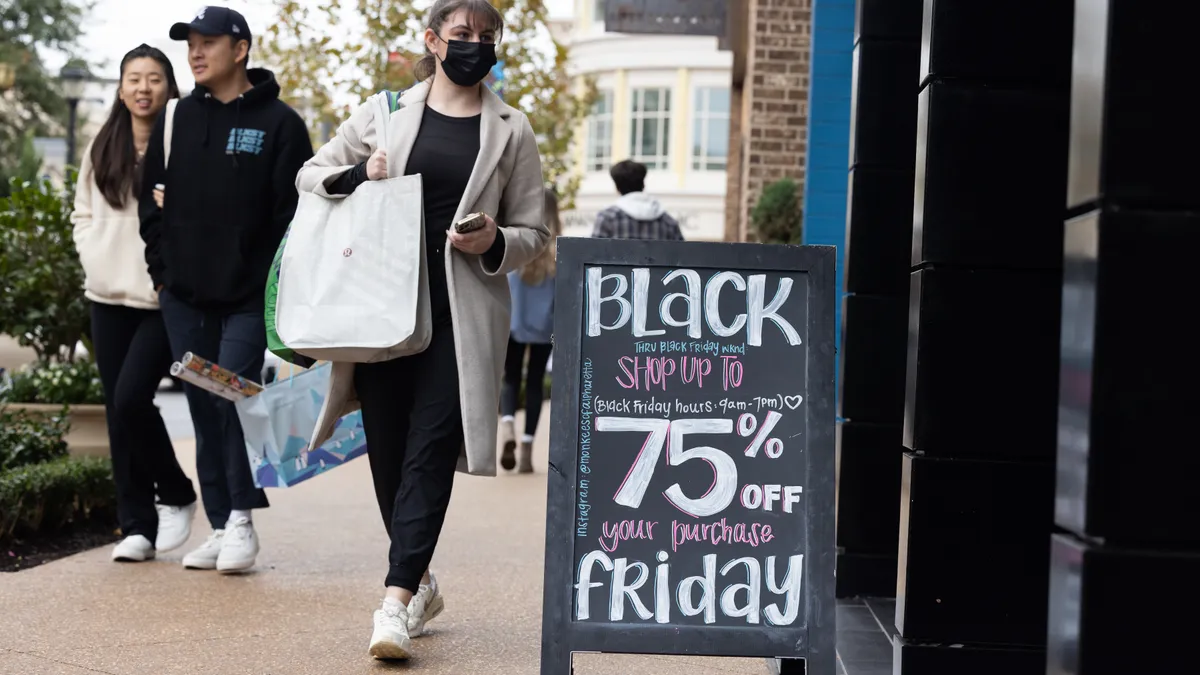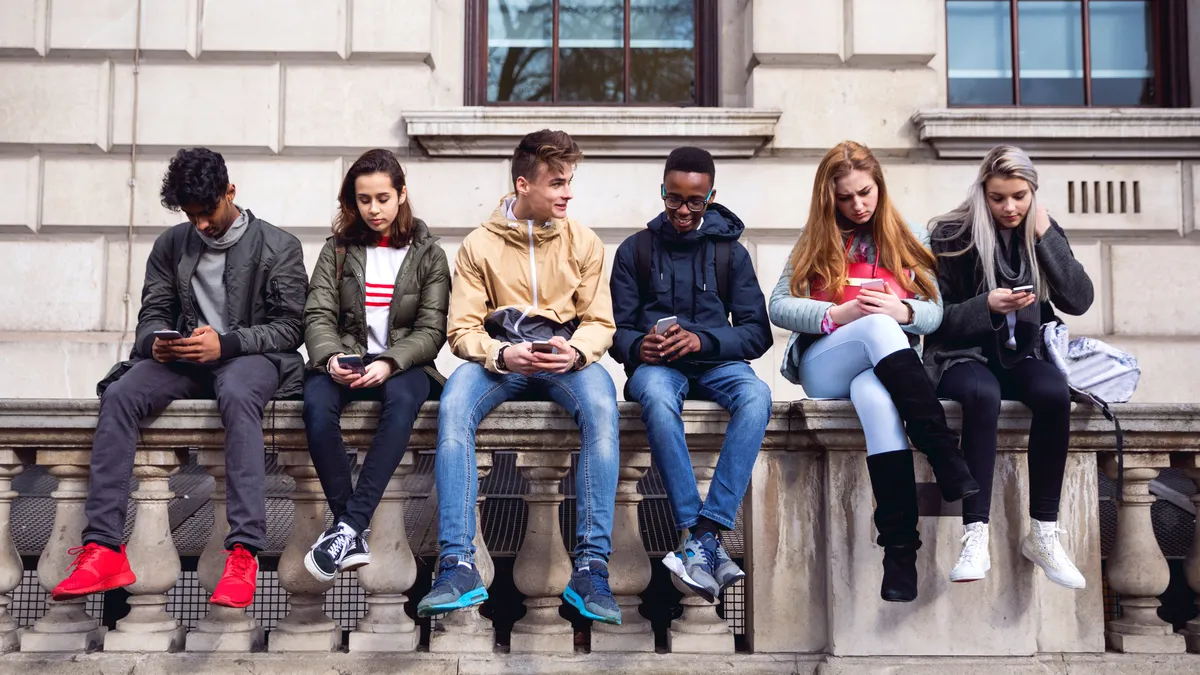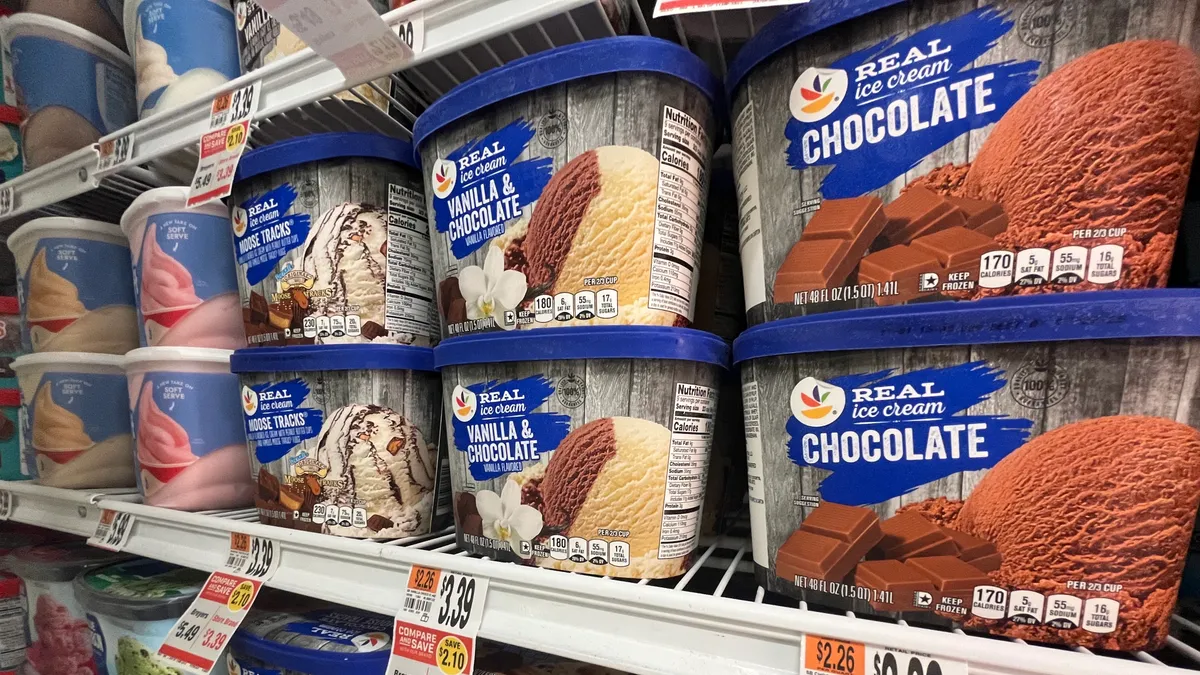With inflation having moderated somewhat from 2022, supply chain problems easing and COVID-19 pandemic restrictions seemingly a thing of the past, the holiday season could shape up to be a win for retailers.
Retail sales during the holiday period could increase between 3.5% and 4.6% this year compared to 2022, reaching between $1.54 trillion and $1.56 trillion, according to a September report by Deloitte.
That would represent slower growth than last year when holiday sales jumped 7.6% and reached $1.49 trillion, per Deloitte.
Online-specific sales could reach $232 billion at a growth rate of 8.4%, according to Forrester’s U.S. 2023 Online Holiday Retail Sales Forecast.
But despite lower inflation, consumer confidence is proving to be a sticky issue for the industry. Over the past few months, plenty of companies have noted the continued lack of confidence among shoppers.
Co-CEO and CFO of athletics brand On Martin Hoffmann this month told analysts that consumer confidence has changed since last year and that the brand sees less enthusiasm going into this holiday season. Target CEO Brian Cornell in August indicated that macroeconomic trends continue to impact how consumers interact with retailers and Grove Collaborative’s new CEO Jeff Yurcisin echoed that sentiment last week.
“They're excited, but they are in more of a trade-down mood,” McKinsey Partner Tamara Charm told Retail Dive.
Preliminary data shows that though budgets and sales are expected to increase year over year, shoppers actually expect to get less for more.
Here’s a look at the data painting a complex holiday season for retailers.
Inflation continues to rain on the parade
Holiday shopping budgets this year are expected to surpass pre-pandemic levels, growing over 14% year over year to $1,652 on average according to Deloitte’s 2023 Holiday Retail Survey from October.
Specifically during the Black Friday and Cyber Monday period, shoppers plan to spend an average of $567 (a 13% increase year over year), according to Deloitte’s 2023 Black Friday-Cyber Monday survey.
But the major reason for those increases appears to be that shoppers simply expect high prices, Deloitte Retail Research Leader Lupine Skelly told Retail Dive, despite gradual improvements with inflation throughout the year.
“It's hard for consumers to kind of estimate what [improved inflation] means,” Skelly said. “Especially when they're going to the grocery store every day and you see that these prices are a lot higher. So it's kind of hard to understand what this means for a gift budget.”
Seventy-two percent of Deloitte’s respondents indicated they expect goods to cost more this season and many plan to buy fewer gifts. Additionally, shoppers plan to spend more on gift cards compared to 2022, with allocations for that rising from $217 to $300.
“What you're doing is putting the inflationary price onto your recipient,” Skelly added.
Looking more for deep discounts this season, shoppers may even use the opportunity to stock up on essentials.
A Shopify and Gallup survey released in November found that 34% of shoppers plan to use holiday deals to stock up on everyday products. Meanwhile, 29% said they’ll make a big-ticket purchase they’ve been holding back on.
A reduction in savings accumulated during the pandemic, increased interest rates and resuming student loan payments all present looming obstacles to consumers this season, according to Forrester. Deloitte’s holiday survey found that 17% of respondents said they have student loans to repay this fall.
As such, heightened competition among retailers is anticipated this season as the fight to attract cost-conscious consumers increases — which could lead to pricing pressure — per Forrester.
“I think what we'll see is consumers are really looking for the best deals in this holiday,” Charm said. “And then conversely, they're also looking to be inspired for those items that they might be willing to splurge on.”
Retailers have started promoting holiday deals earlier in the year to provide more buying opportunities for shoppers.
Forty-one percent of respondents in Deloitte’s Black Friday Cyber Monday survey said they shopped during October promotional events. However, those early deals may cannibalize some Black Friday and Cyber Monday spending, per Deloitte.
The joy of the holiday season isn’t entirely lost on shoppers though, with Deloitte respondents saying non-gift purchases are a priority this season (up 25% compared to 2022) as they restock items such as holiday decorations.
“There's definitely a lot of enthusiasm this year,” Skelly said, adding that a big driver contributing to the uptick in spending is that "consumers are planning to spend a lot more on like the decorations and the outfits to go to the parties.”
But who’s planning to spend the most this season and where is shopping most likely to happen?
Shopping for everything, everywhere, all at once
A look at varying income levels shows consumers are not all thinking alike in terms of holiday spending this season.
Shoppers earning less than $50,000 annually anticipate increasing their holiday spend by 11% to $742 and those earning between $50,000 and $99,000 expected a 26% increase, per Deloitte.
But consumers making between $100,000 and $199,000 plan to increase their holiday budget by just 2% this season to $2,167. Meanwhile, those earning more than $200,000 expect to increase budgets 22% to $3,922.
Millennials’ impact on holiday sales has grown over the past few years.
The age group is expected to be responsible for 43% of Black Friday and Cyber Monday spending in 2023 compared to 30% in 2019, per Deloitte.
But just about everyone will be shopping across channels this holiday season.
“I think consumers now are shopping everywhere all the time,” Charm said. “We've seen a big increase in omnichannel shopping, not only among younger generations but among older generations as well.”
JLL’s Holiday Shopping Survey Report 2023 from October found that 49.6% of Gen Z customers plan to do their holiday shopping at malls, marking a higher proportion than the 40.8% average.
The number of consumers planning to do at least some holiday shopping online this year increased to 82% this year, according to a holiday purchase intentions consumer survey from Circana emailed to Retail Dive. This represents a jump from last year’s 80% but is still below the 2021 amount of 85%.
Deloitte predicts that e-commerce sales will increase between 10.3% and 12.8% this season.
“I think what's happening is consumers are going to continue to go to the stores they trust and go in person for the experience,” Charm added. “However, they're going to look beforehand on the website on the apps that they have. They're going to look in the store on their phone at what else is going on in other places.”
That openness to find the right price at the right place might encourage some shoppers to look toward smaller retailers this season. Shopify and Gallup’s survey found that 36% of consumers plan to buy from a small business on Small Business Saturday and 44% intend to shop at a small business another day this holiday season.
But standing out among the growing numbers of retailers and brands fighting for consumers’ dollars will remain tough this year. Additionally, 58% of consumers said doorbusters are less appealing and 55% are trying to avoid crowds, per Deloitte.
“For retailers, these key promotional events are when they've got to pounce on consumers because that's where their attention is going to be,” Skelly said. “I think it puts pressure on retailers. … There's these promos going on all the time. How do you stand out? How do you make a differentiated promotion? Something kind of interesting to see is if retailers are tacking on free gifts or kind of getting creative.”






















